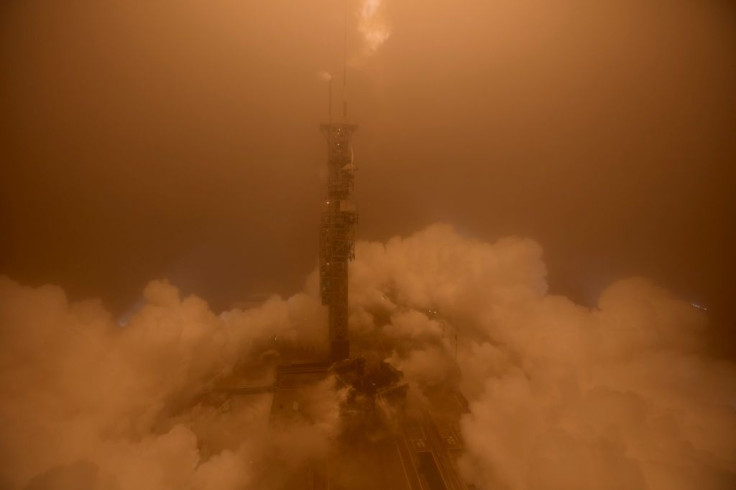Mars Surface Lander Insight Detects Strange 'Humming' Sounds From Red Planet

NASA’s InSight lander has detected a strange humming sound coming from the Red Planet which could indicate the presence of water in Mars.
According to the peer-reviewed journal Science Mag, the humming sounds are constant minute tremors or microseisms. The sound was detected by NASA’s InSight lander after it completed placing its complex seismometer on the surface of Mars. This is the first time that a microseism has been detected on another planet.
Microseisms detected on Earth are usually caused by sloshing waves in oceans caused by storms and the changing of tides. With this in mind, some are speculating that water or perhaps underground oceans beneath the Red Planet could be the same cause for the humming sounds.
However, according to Philippe Lognonné, a planetary seismologist at Paris Diderot University who is in charge of the NASA instrument, the noise is most probably caused by low-frequency pressure waves from atmospheric winds on the surface of the planet. The winds cause shallow, longer-period waves called Rayleigh waves.
The InSight lander’s main objective is to detect activities beneath the surface of Mars. This includes identifying and measuring seismic activities, particularly “marsquakes,” which could help scientists in their study of the planet’s origin.
The InSight has yet to detect any marsquake, but the microseism shows that the lander’s seismometer is working. The report further said that Earth studies on microseism have proven to be valuable in understanding subsurface cultures of the planet and that it will be similarly valuable on Mars.
According to Lognonné, the sound waves could help the team’s seismologists do further probing of the rigid surface crust around the area where the lander is located. The lander’s mission, however, is more complicated than it sounds.
According to Forbes, due to the unfamiliar surface and other extreme conditions, it took the InSight lander more than a month to deploy its hypersensitive seismometer. Scientists needed to maneuver the electric tether that connects the instrument to the lander to reduce artificial sounds coming from the NASA vehicle. The next challenge was placing the heat and windshield over the instrument to protect it during the space mission.
And although detecting the microseisms is considered a breakthrough, NASA scientists are still waiting for the first marsquake to signify the mission’s success.
© Copyright IBTimes 2024. All rights reserved.





















